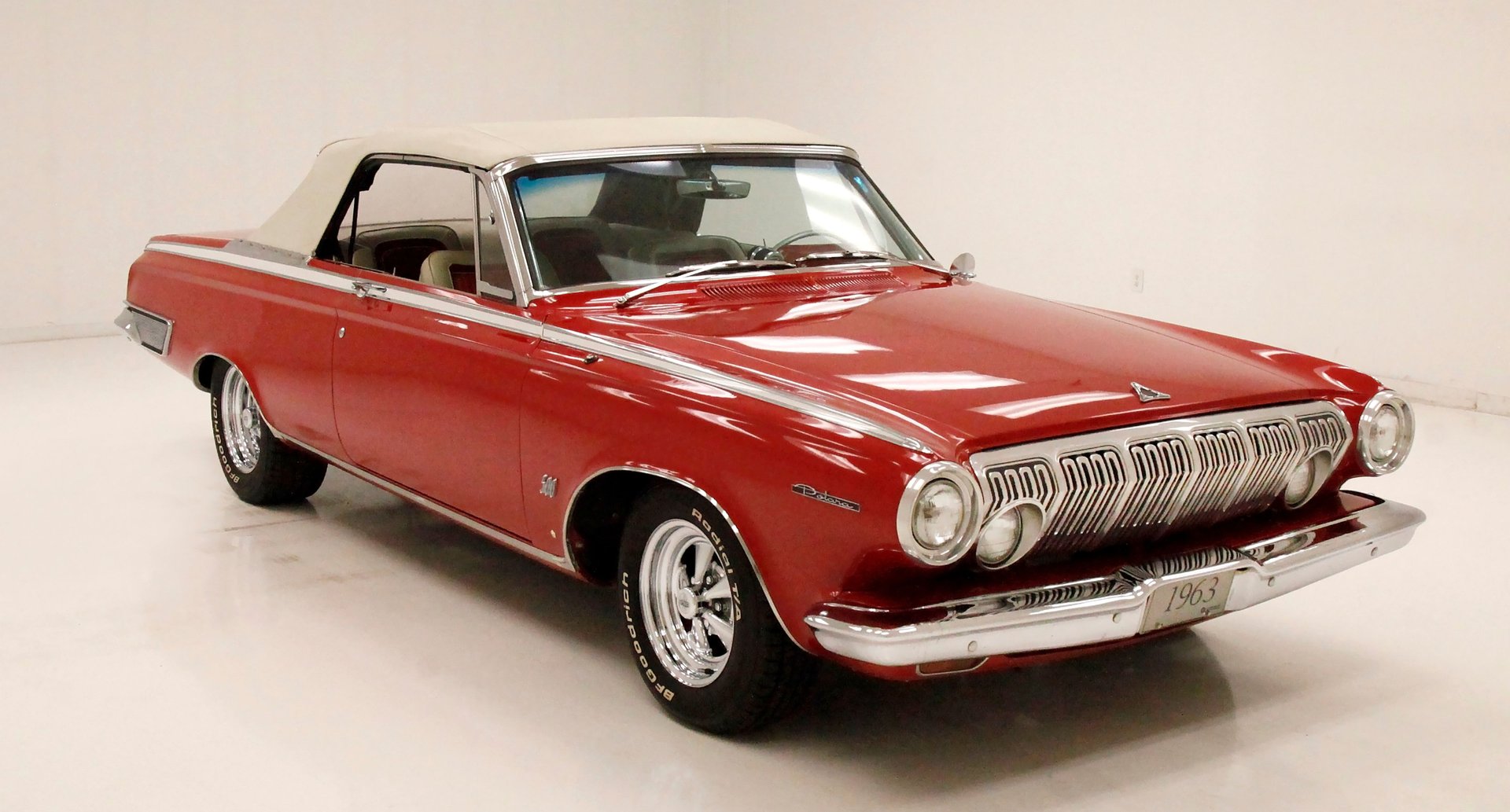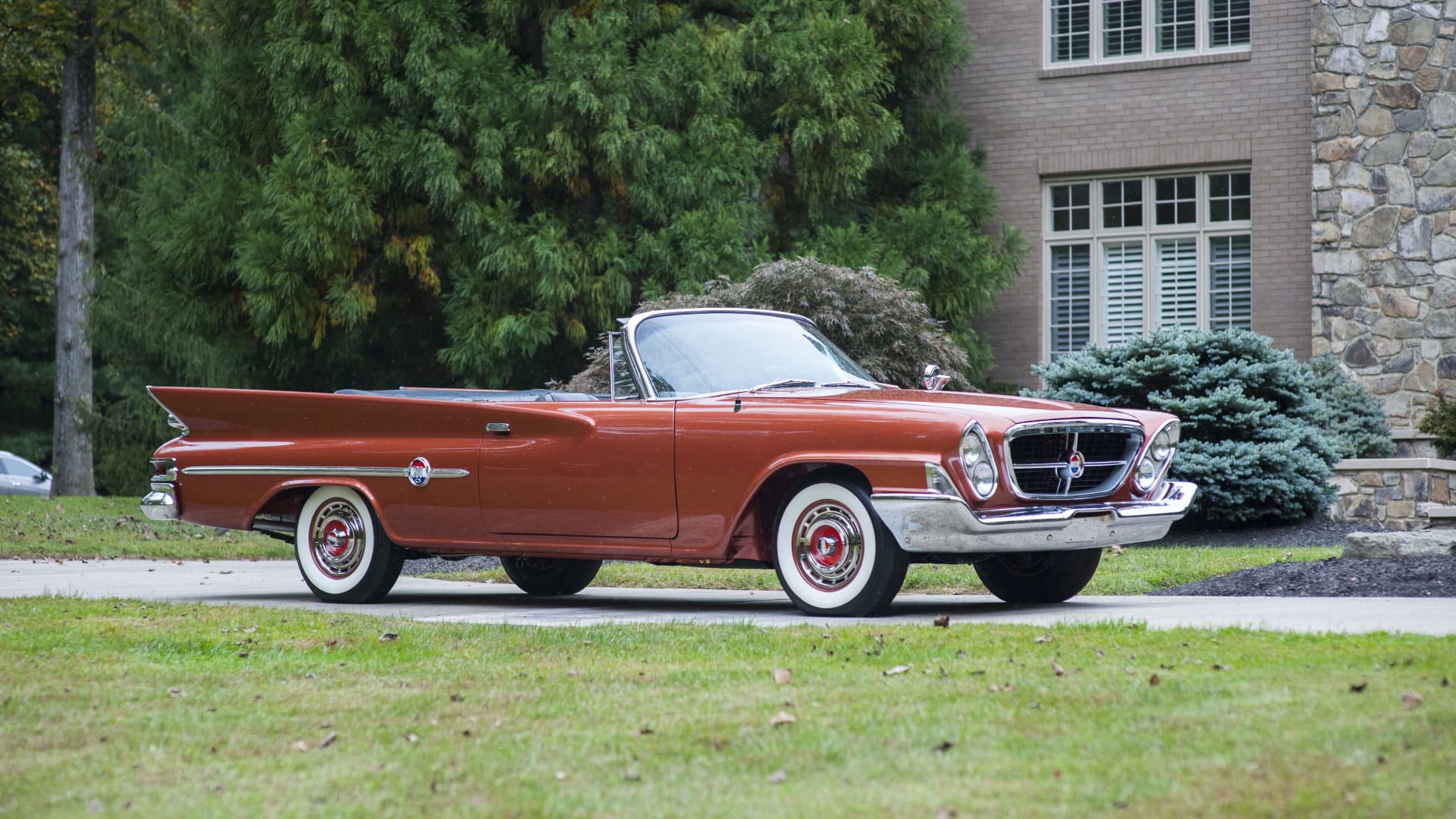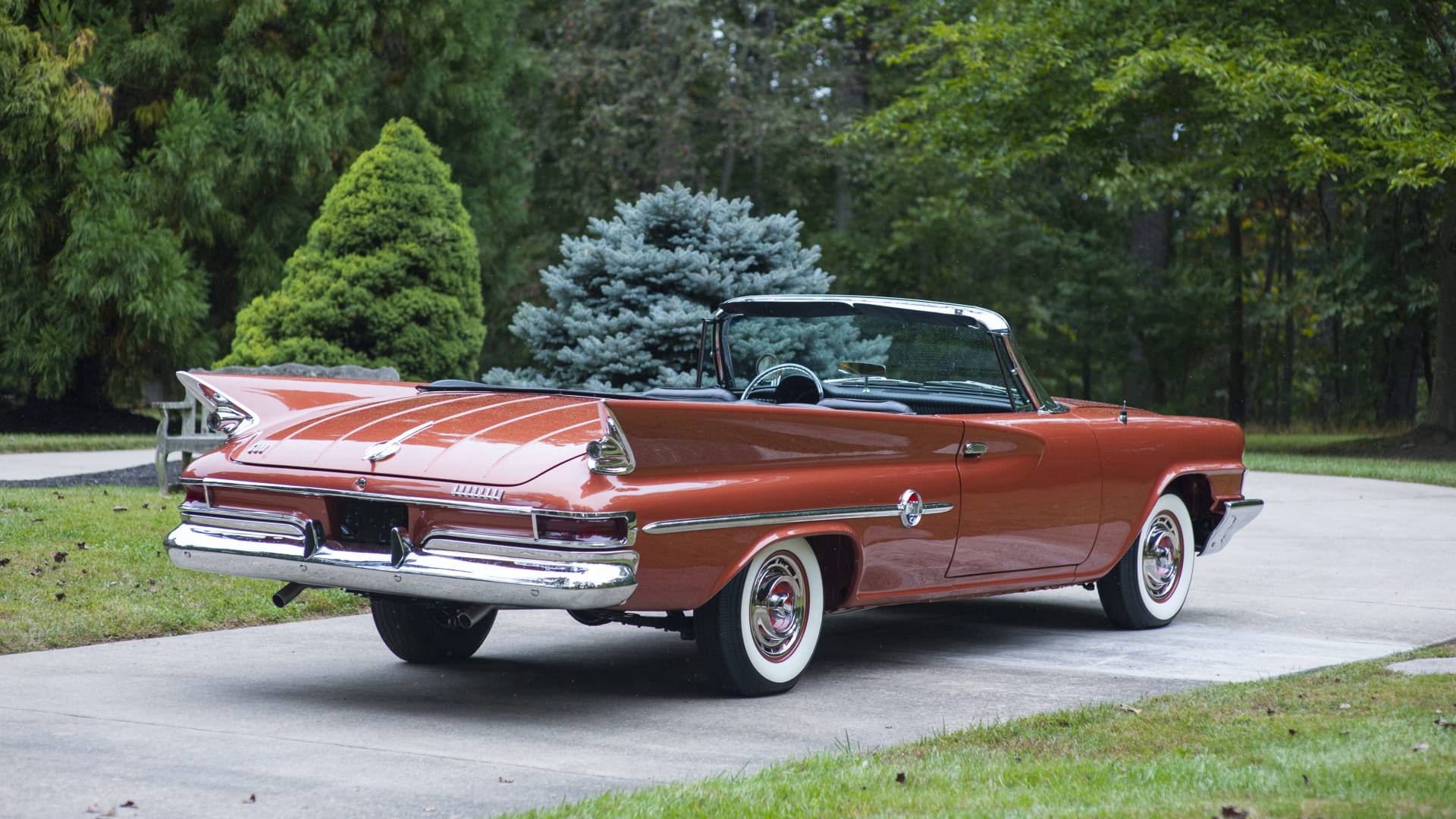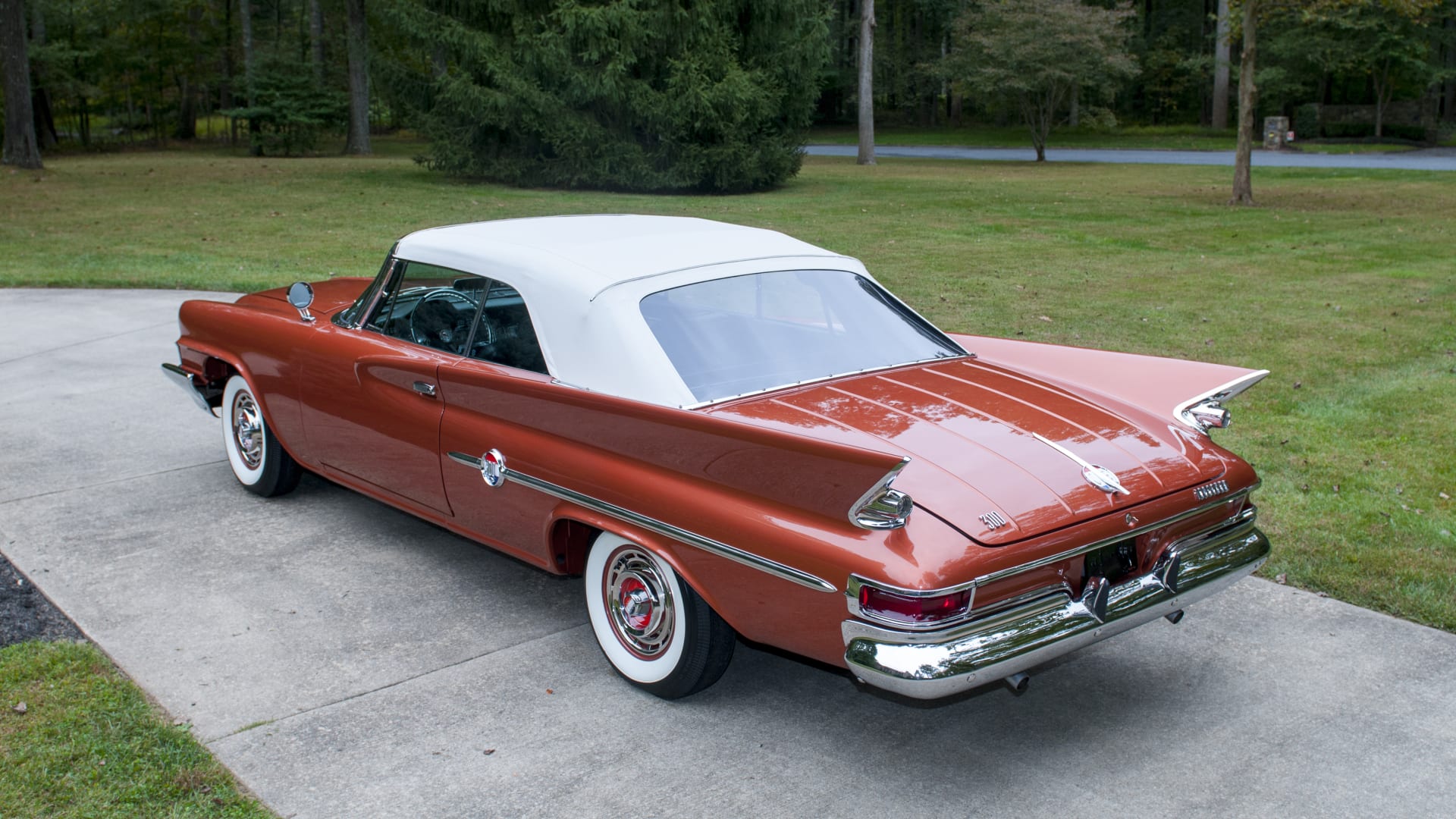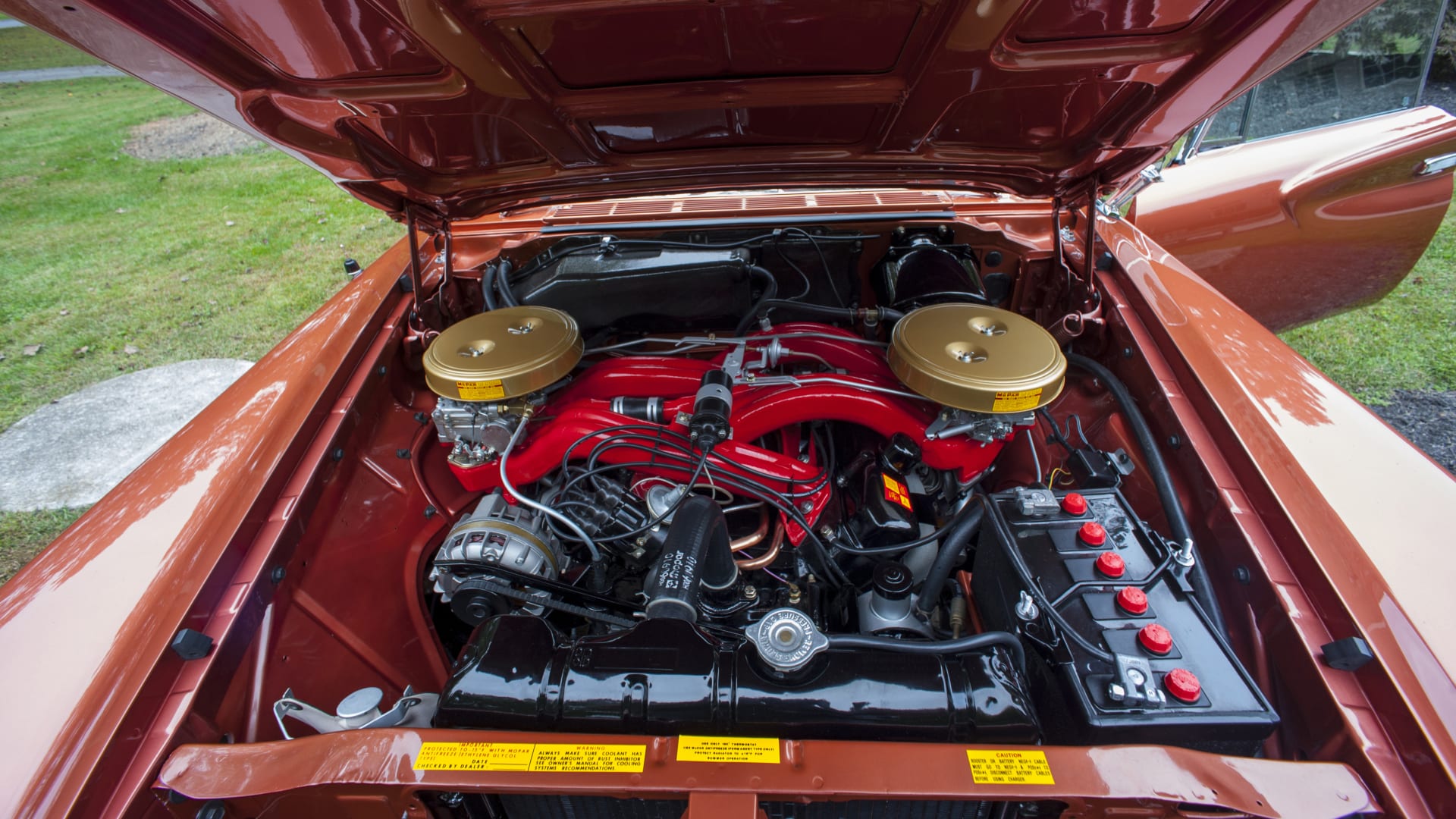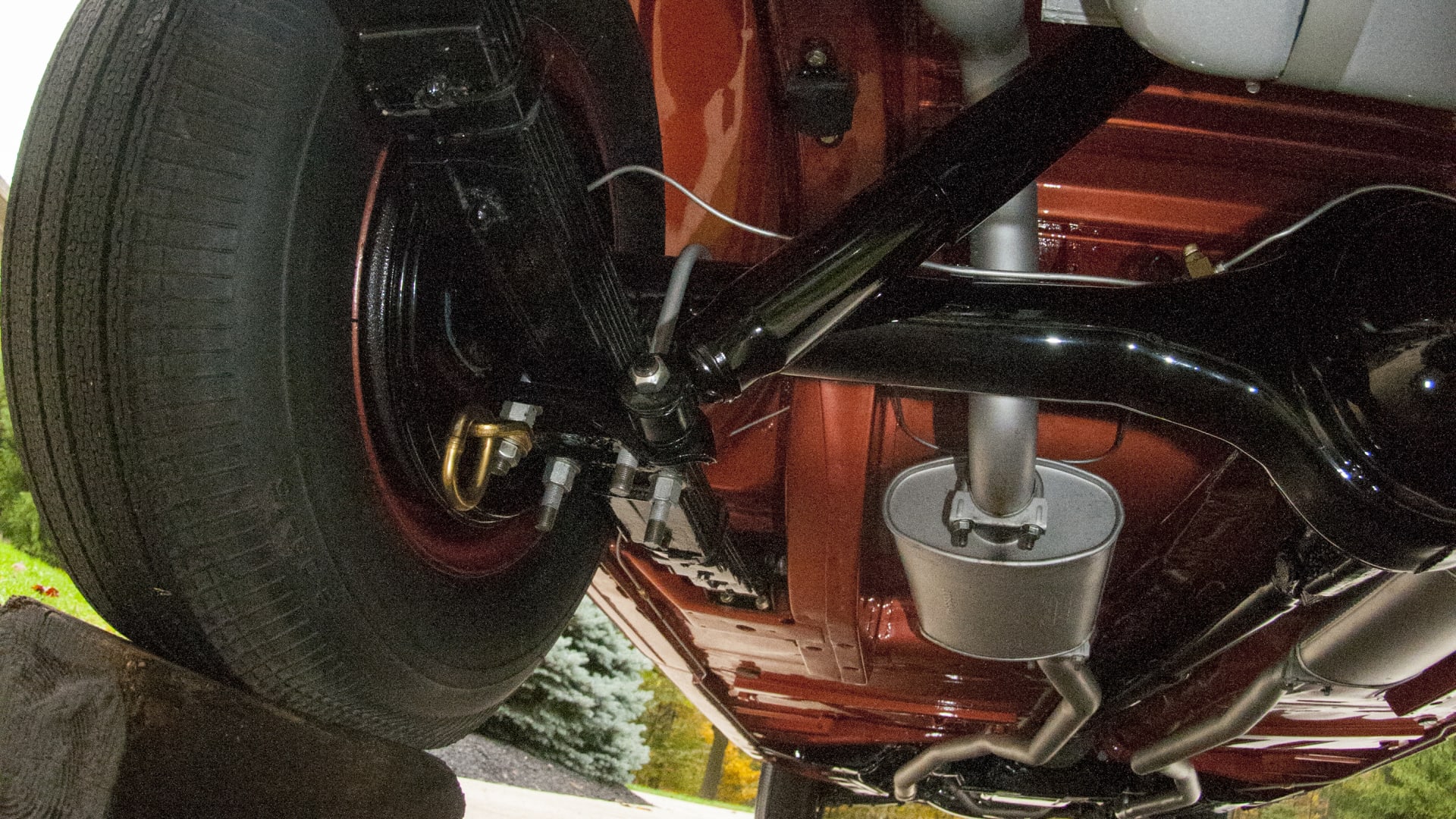This 1963 Polara 500 convertible is loaded with many factory options.
It includes air conditioning, power steering, power brakes, a white power convertible top and dual exhaust system.
It’s powered by a 383ci V8 engine with a 4-barrel carburetor, producing 330hp, mated to a 3-speed push-button TorqueFlite automatic transmission.
The interior sports deluxe two-tone vinyl bucket seats with seatbelts and a Music-Master AM radio and electric clock.
It rides on Mopar Magnum 500 wheels wrapped in BFGoodrich Silvertown radial red line tires and includes a set of original Dodge wheel covers.





